Let’s play a game. When I say “Vatican City,” what’s the first thing you think of? Does it have something to do with the Catholic church?
It should. After all, the Vatican City is the spiritual and administrative center of the Roman Catholic Church and the Pope’s official residence. It’s known as the Holy See, and it’s one of the top attractions in Rome.
If it’s on your Rome itinerary, read on for a list of the best things to do in Vatican City. We’re here to help.
After all, this website is all about helping you get the most out of a trip. 🙂
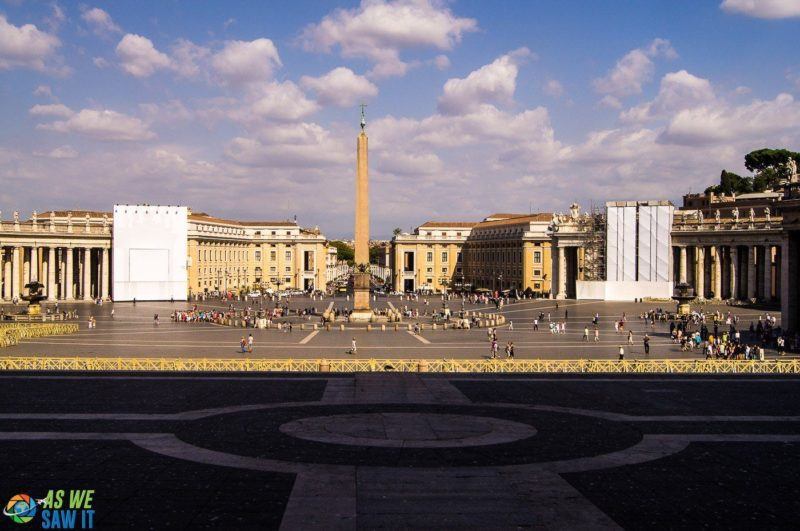
One day at the Vatican
The first time we went to Italy, we only had a week. I don’t know what we were thinking. Do you know how many fantastic places there are in Italy?
Believe us, deciding how to spend one week in Italy is a challenge. With all the history, art and culture on offer, how do you choose which points of interest to see? I mean, it is impossible to fit over 2000 years of history into seven days!
It was hard to settle on the places to visit, but ultimately, our final, 7-day Italy itinerary consisted of:
- 2 days in Rome followed by
- 1 day in Vatican City, then
- 2 days in Florence, and
- 2 days in Venice
Even with so little time available, one week in Italy was totally worth it. The key was planning ahead so we wouldn’t be stuck on time wasting ticket lines. And believe us, some Vatican attractions have seriously long lines!
Speaking of which, if you can afford more time to see the Vatican, we envy you. The Vatican Museums have enough to keep a person busy for days!
But I digress. Back on topic, you’re here to discover the best things to do in Vatican City. So here’s our list of what to see put on your itinerary, along with a bit about the Vatican itself.
ⓘ TIP: If you’ll be visiting Rome for a few days, be sure to check out the helpful travel planning links at the end of this article.
Best Vatican City attractions
Touring the Vatican is one of the top things to do in Rome, even for people who aren’t Catholic. Inside its protective walls is a treasure trove of cultural and religious artifacts, as well as vast collections of world class art. Whether or not you count yourself among the faithful, you won’t be disappointed.
If you’re wondering what to do in Vatican City once you get there, we’ve got good news for you. It’s small and yes, you can tour the Vatican in one day. Well, as long as you don’t try to see everything in the Vatican Museums. But we’ll get to that.
So here’s what to put on your Vatican itinerary.
1. St. Peter’s Square

St. Peter’s Square, known locally as Piazza San Pietro, is the massive plaza located in front of St. Peter’s Basilica. This piazza is large enough to hold as many as 400,000 people. Like the basilica, it was named after Saint Peter, the apostle whom Roman Catholics claim as their first pope.
According to tradition, this is where Peter was crucified, and that could very well be true. Historically, it’s likely that almost all Christians in Rome were martyred in the Circus of Gaius/Nero—the site where St. Peter’s Square now stands.
The square contains two beautiful fountains, but it’s an ancient Egyptian obelisk that competes with the basilica as the square’s focal point. Caligula brought the obelisk from Egypt to Rome in 37 AD, and it was standing nearby when Peter died. (It was moved to its current site in 1586.)
A century later, Pope Alexander VII commissioned Gian Lorenzo Bernini to create a plaza large enough “so that the greatest number of people could see the Pope give his blessing, either from the middle of the façade of the church or from a window in the Vatican Palace.”
Bernini surrounded the plaza with a colossal colonnade, built to embrace visitors in “the maternal arms of Mother Church.”
2. St. Peter’s Basilica

St. Peter’s Basilica is the largest and one of the best known churches in the world. A church has been standing on this site since the time of Roman Emperor Constantine the Great. St. Peter’s Basilica is a pilgrimage site for many Catholics. This is the second St. Peter’s. It was built in the 1500s to replace the original St. Peter’s Basilica, which was constructed in the fourth century.
People often mistakenly think that St Peter’s is the cathedral of Rome, but it’s not. A cathedral is the seat of a bishop, and Saint Peter’s does not have a bishop. St. John Lateran (San Giovanni in Laterano) is Rome’s cathedral.
The original basilica was built over the historical site of the Circus of Nero, where the Romans martyred thousands of Christians in the first century. According to ancient writers, Jesus’ disciple Peter and many other well-known Christian leaders were martyred here. (St. Paul was also martyred in Rome, but not at the Circus, as he was a Roman citizen.)
The basilica’s interior is decorated with magnificent monuments, many of which were created by the great Bernini. The high altar of the basilica, known as St. Peter’s Baldachin, is the best of them. Due to the size of the space, it’s hard to tell that the altar is actually 10 stories tall.
Make sure you climb all the way to the top of the dome. Designed by another great, Michelangelo, it offers unparalleled 360-degree views of St Peter’s Square and the city of Rome.
One of the basilica’s bronze statues is reputed to be of St. Peter. His feet are shiny and worn by centuries of devotion.
Not to be confused with the Vatican necropolis, the Vatican Grottoes beneath St Peter’s Basilica contain the tombs and sarcophagi of numerous popes, as well as several huge columns from the original 4th-century basilica. The entrance is in the Pier of St Andrew near the high altar. Entrance is free and it is forbidden to speak inside.
How to visit St. Peter’s Basilica
- Hours: Open daily, 07:00 – 19:00.
- Admission: Free, no ticket required. However, there’s a fee for the Sacristy and to climb the dome.
- Sacristy and Treasury Museum: Open from 09:00 – 18:15, from April to September and from 09:00 – 17:15, October to March. €7 to enter. The entrance is inside St. Peter’s Basilica.
- St. Peter’s Basilica Cupola: Open daily 08:00 – 17:00, open until 18:00 April 1- September 30. A ticket costs €6 euros if you climb all the way up (551 steps). Or you can pay €8 to take an elevator. The elevator doesn’t go all the way up; it’s another it’s 320 steps to the top from there. But the view is worth it. Allow about an hour for the experience.
ⓘ TIP: You can avoid two long security lines by visiting the museum first. There’s an entry to St. Peter’s Basilica directly from the Sistine Chapel.
3. The Vatican Museums

These museums are Vatican City’s national museum of art. Pope Julius II was an art lover and became the patron of Michelangelo, Bramante and Raphael, as well as of Bernini, the architect responsible for St. Peter’s Basilica.
Pope Julius needed a place to house all of his treasures and founded the Vatican Museums in the early 16th century. It now ranks as the 5th-most-visited art museum in the world.
Ever since his reign, popes have collected art, and so as a result, the Catholic Church actually owns some of the best-known classical sculptures and masterpieces of Renaissance art in the world.
The Vatican museum complex is so massive that most of the rooms are closed to the general public. Even if every room were available, there is only enough space to display a portion of the Vatican’s treasures. It’s that big.
According to a Vatican authority, if you were to spend one minute viewing every item on display, it would take you 11 years to see it all.
The Vatican Museums are overwhelmingly impressive, even though we only had time to view a tiny fraction of the works on display. Which brings me to my biggest regret: we did it all on our own. Sure, we saved some money, but if we’d taken a tour we could have seen more in less time. Wasting so much precious time backtracking was probably the main reason we had such sore feet.
At least we were smart enough to buy fast-track skip-the-line tickets to get in. There’s a lot to be said for not wasting time on vacation.
ⓘ TIP: There aren’t many toilets in the museum, so use it before you enter.
How to visit the Vatican Museums
The Vatican Museums are behind St Peter’s Basilica to the right. To get to the Vatican Museums, you have to walk around the Vatican walls from St Peter’s Square, about 5 minutes.
- Open: Mon-Fri 10:00 – 13:45 during November – February (Christmas hours 8:45 – 16:45). During March – October the Museums are open Mon-Fri 10:00 – 16:45 and Sat. from 10:00 – 14:45. Closed on Sundays. Entrance to the Museums ends 75 minutes before closing time.
- Admission: General tickets are €17,00 and include entry to the Sistine Chapel. On the last Sunday of each month the Museums can be visited free from 09:00 to 13:45. (Crowded; try to avoid!) Guided tours are also available. And it bears repeating: get exclusive access and skip the long ticket line by buying your ticket online ahead of time. I can’t stress this enough!
Read our Guide to Visiting the Vatican Museums for all the details.
Two tours to consider:
- See the Hidden Vatican Museums, take a guided tour of those areas normally closed to the public.
- Early morning priority access to the Vatican & Sistine Chapel – You’ll get it all to yourself for a whole hour before the general public hordes descend. (Photo op!)
ⓘ TIP: Entry is free on the last Sunday of every month. However, the museums are so crowded that it’s hard to see anything at your leisure.
4. Sistine Chapel
Considering that how incredible the Vatican Museums are, it’s a wonder why so many people try to see the Sistine Chapel by itself. In any case, you’ll often see it as a separate Vatican site, so I am doing the same.
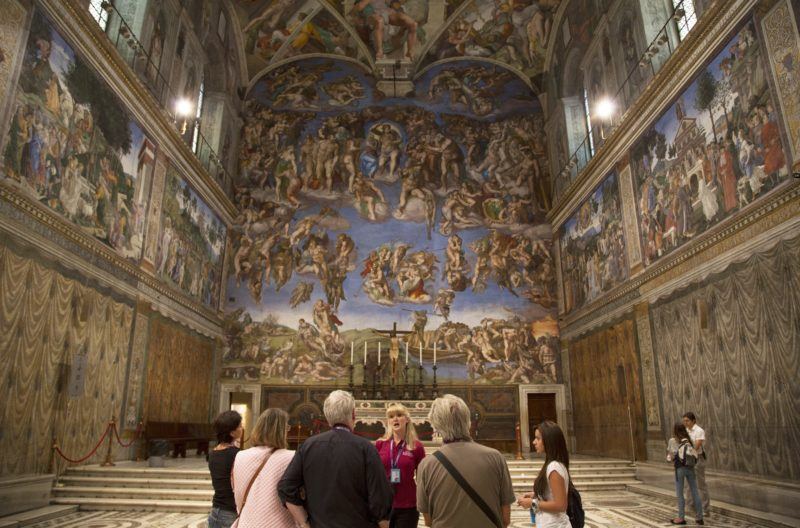
The Sistine Chapel is chock full of Michelangelo’s paintings, but it’s best known for his Creation of Adam masterpiece on the ceiling above.
Don’t expect to take your camera into the Sistine Chapel and snap a selfie of yourself with the Almighty reaching out to touch Adam’s finger. Absolutely no photography or video is permitted in the room.
The reason is not so that they can protect their precious frescoes from flash damage, because nobody has used flash-bulb technology for decades. People use LEDs these days (which, we should mention, are the same lighting technology that they use to illuminate all the artwork). So don’t believe that tripe.
When the Vatican decided to restore Michelangelo’s frescoes back in 1980, the price tag was so high that they had to seek outside funding for the project. The highest bidder was Nippon Television Network Corporation of Japan. In return for funding the $4.2 million project, they received the exclusive rights to photography and video of the restored art.
Here’s what they don’t tell you: Nippon’s exclusivity expired three years after the Sistine Chapel’s restoration was completed. We wouldn’t be surprised if the current “no photos” rule exists solely to encourage purchases from the museum gift shop. Hmph.
How to visit the Sistine Chapel
The Sistine Chapel is a small part of the extensive Vatican Museums.
- Admission: Included with your Vatican Museum ticket.
Inspired? Pin this post and share it with your friends!
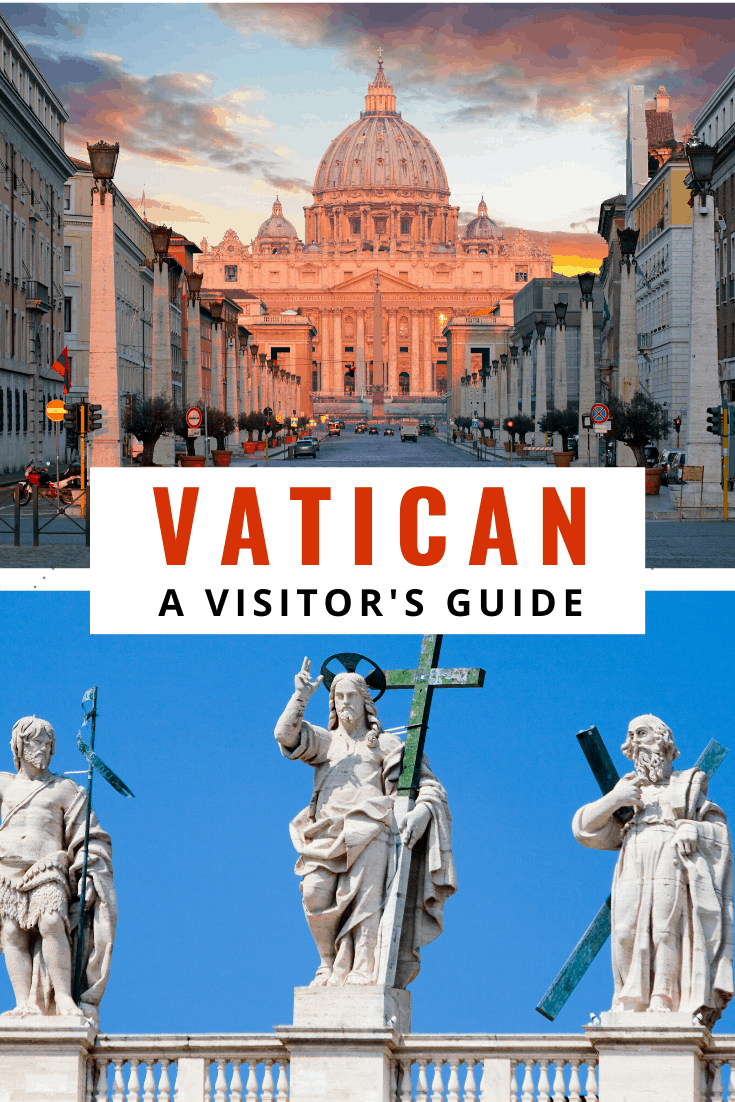
5. Vatican Scavi necropolis
We are so glad we were able to take this Vatican City tour. It was the highlight of our entire day in the Eternal City. And that’s saying a lot!
The Vatican Necropolis began as a humble cemetery in the first century. It was a convenient place to bury Christians who were martyred at the Circus of Nero. The apostle Peter was one of these martyrs, so his body ended up here.
Constantine, the first Christian Emperor of Rome, had a bad habit of covering up religious sites with churches, and St. Peter’s supposed resting place got the same treatment. Pope Julius II replaced Constantine’s church with the one we know today, and positioned the high altar over the spot where Peter’s body was said to be.
In the 1940s, Pope Pius XI commissioned a series of excavations (scavi, in Italian) beneath the floor of St. Peter’s Basilica to try to pinpoint the saint’s tomb.
They uncovered over 20 mausoleums, some containing hundreds of bodies, as well as from papal tombs to an ancient Roman street. But here’s something they don’t tell you: Whether or not the Scavi contain St. Peter’s real remains has never been settled, even within the Vatican.
How to visit the scavi (Vatican Necropolis)
The Vatican Scavi Tour is one of the toughest tickets to come by and one of the most exclusive tours in all of Rome. Only 250 people are allowed through each day, due to the tight space as well as a desire to limit temperature and humidity levels. Compare that to the 30,000 who visit the Vatican Museums!
You can either take a private tour like this one, or request permission to tour it. See the official Vatican Scavi website for details on how to do that.
- You must request a reservation ahead of time – spots fill up months in advance.
- If your requested time is available, they will require payment immediately.
- Visitors must be over 15 years old – no exceptions.
- The guided tour lasts about 1½ hours.
- Arrive 15 minutes ahead of time, to clear security.
- No cameras of any type are permitted. (It is completely impossible to sneak a photo. Believe us, we tried.)
- You do not need to be Catholic for this tour.
ⓘ TIP: Avoid this tour if you have difficulty with stairs or tight spaces!
6. The Swiss Guards

Don’t let the frou-frou of those vibrant Renaissance uniforms fool you: Every Swiss Guardsman has served in Switzerland’s army, and they are well trained in firearms and martial arts.
Swiss Guards have such a stellar reputation that they have been protecting the Pope and the Apostolic Palace since 1506.
In May 1527 the army of Emperor Charles V stormed Rome. Heavily outnumbered, the Swiss Guards fought the army on the steps of the High Altar of the Vatican while the Pope escaped through a secret passage to the Castel Sant’Angelo. Only 42 of the 189 Swiss Guards survived, but the Pontiff was saved.
Swiss guardsmen are quite serious about their duties. Even when on tourist duty, you’ll find them outfitted with medieval halberds (a spear-axe combo), swords and pikes. They might not appear very threatening but believe me, those ancient weapons aren’t just for show. Every Swiss guardsman is well trained in each one. They’re not afraid to use it, so don’t try any funny business or you may find yourself at the wrong end of a 9-foot pike.
How to become a Swiss Guard
To be a Swiss Guardsman, you must be:
- single
- a citizen of Switzerland
- a Roman Catholic
- male
- between the ages of 19-30
- a former member of the Swiss military and
- of excellent conduct and reputation.
Those who are accepted get great benefits: 1300 Euros per month (about $1600) plus overtime. They pay no tax, get free accommodation, and eat free, delicious, Swiss-Italian food cooked by Polish sisters. Their tour of duty lasts for two years.
As for meeting a Swiss Guardsman, they will talk to you, but don’t expect them to be tour guides or pose for photos. They won’t let anything stand in the way of duty.
7. Papal apartments

Okay, so maybe you can’t actually visit the private area where the Pope lives, but you can see the Papal Apartments from the plaza! One of his windows overlooks the square, and this is where the pontiff stands when he addresses the crowds of pilgrims.
How to see the Pope
If you’re among the faithful and want to see the Pope, the Holy See is the easiest place to do it. He speaks to the crowds twice a week whenever he is in town.
Just remember that you’ll need to be dressed appropriately, or you’ll be turned away.
Wednesdays – 10:30 AM
Seats are on a first-come, first-served basis. Arrive 3 hours early to get a good seat.
- General Audiences last for about 2 hours.
- You will need a ticket. TICKETS ARE ALWAYS FREE, but must be requested and picked up ahead of time.
Sundays – 12 noon
You DO NOT need tickets for the Sunday Angelus.
- On Sundays the Pope appears in his apartment window on St. Peter’s Square. He speaks for around 15-20 minutes.
- Sundays, he gives a short speech, recites the Angelus, and ends with the Apostolic Blessing. He may also greet the crowds in various languages.
- For the Pope’s current schedule and details on getting an audience ticket, you can find the information here.
ⓘ TIP: You’ll need a ticket to claim a seat. However, when the Pope is holding audience outdoors, there is always standing room at the back of the Square for those without one.
If you’d like to upgrade your experience
There are guides who will reserve your ticket and select the very best viewpoint, so you can fully appreciate this inspiring ceremony. As part of this service, your guide will prepare you for the Pope’s entrance by explaining the rich history and traditions behind the Papal Audience, and the Papacy itself. Learn more here.
What to wear at the Vatican
Vatican City has its own dress code. While it is unlikely you would be hassled for walking around St. Peter’s Square in shorts or spaghetti straps, the officials will turn anyone away at the door who they deem is not dressed respectfully.
- Remove hats indoors.
- Shoulders must be covered. No sleeveless tops, tank-tops, sundresses or halters. A scarf/pashmina is acceptable as a cover up.
- Knees must be covered. No cut-offs or short skirts. No shorts, either. Women can wear tights to comply with this rule. Or, you can wear zip-off pants (the ones that convert to shorts with zippers around the knees) and reattach the lower legs as needed.
- Wear good walking shoes. Many people spend a whole day on their feet in the Vatican City, which means lots of hard surfaces and waiting in lines.
How to get to Vatican City
The easiest way to get to Vatican City by public transportation is to take the metro. Take Metropolitana Line A to the Ottaviano “San Pietro” stop.
Plan your Vatican trip
You really need to plan ahead for your time in the Holy See, especially if you want to see the pope or visit the Scavi. Reservations are essential for certain things, and some Vatican attractions are closed on certain days.
- The Vatican’s website has many useful trip planning resources.
- Vatican skip the line tickets, reservations, and assorted tours can be found HERE.
- For more sightseeing, you’ll enjoy our Vatican photo gallery.
- Scroll around Google’s satellite photo map for a good aerial view.
Read all our Rome & Vatican blog articles: Things to See in Rome in 2 Days, Things to Know Before Visiting Vatican City, Best Things to Do in Vatican City, Guide to the Vatican Museums, and Tips for Visiting the Colosseum.
Cruising to Rome? Best Things to Do in Civitavecchia Cruise Port, How to See Rome on Your Own from Civitavecchia Cruise Port, and How to Go from Civitavecchia Port to the Train Station will be helpful.
| ROME TRAVEL PLANNING ESSENTIALS |
|---|
| ✔ Travel Guide: This Italy travel guide is a top seller on Amazon. If you’re only visiting Rome, Rick Steves Rome is better. ✔ Visas/ETIAS for the EU: Find out what you need, and apply here. ✔ Travel Insurance: Covers lost bags, delays, injuries, and more. We like SafetyWing ✔ Currency: This free app calculates exact currency exchange values. ✔ Flights: Rome’s airport is FCO. Check flight prices here. ✔ Airport transfer: Prebook transportation to your hotel ✔ Accommodation: For Rome, check Booking ● Vrbo ● HostelWorld. For Vatican City, click here. ✔ Getting around: Fastest by metro or on foot. Outside of the city, take the train, use Flixbus, or rent a car. ✔ City Discount Card: The OMNIA Vatican Card and Roma Pass includes the most attractions. ✔ Tickets & tours: GetYourGuide and Take Walks offer a wide variety of options. ✔ Organized trips: G Adventures has insanely affordable small-group tours + guaranteed departures. |
| ROME TRAVEL PLANNING ESSENTIALS |
|---|
| ✔ Travel Guide: This Italy travel guide is a top seller on Amazon. If you’re only visiting Rome, Rick Steves Rome is better. ✔ Visas/ETIAS for the EU: Find out what you need, and apply here. ✔ Travel Insurance: Covers lost bags, delays, injuries, and more. We like SafetyWing ✔ Currency: This free app calculates exact currency exchange values. ✔ Flights: Rome’s airport is FCO. Check flight prices here. ✔ Airport transfer: Prebook transportation to your hotel ✔ Accommodation: For Rome, check Booking ● Vrbo ● HostelWorld. For Vatican City, click here. ✔ Getting around: Fastest by metro or on foot. Outside of the city, take the train, use Flixbus, or rent a car. ✔ City Discount Card: The OMNIA Vatican Card and Roma Pass includes the most attractions. ✔ Tickets & tours: GetYourGuide and Take Walks offer a wide variety of options. ✔ Organized trips: G Adventures has insanely affordable small-group tours + guaranteed departures. |

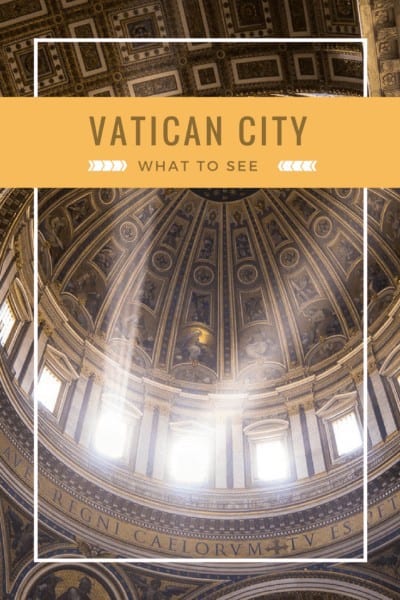
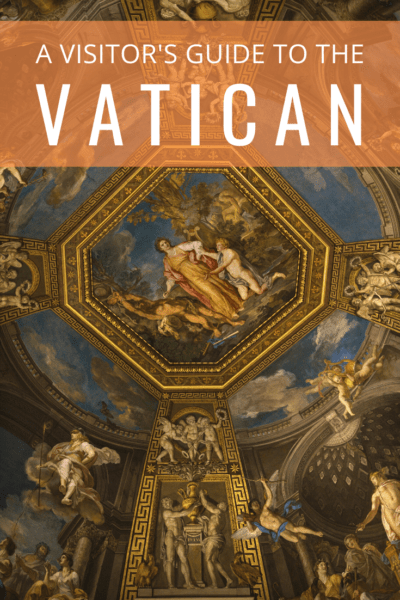
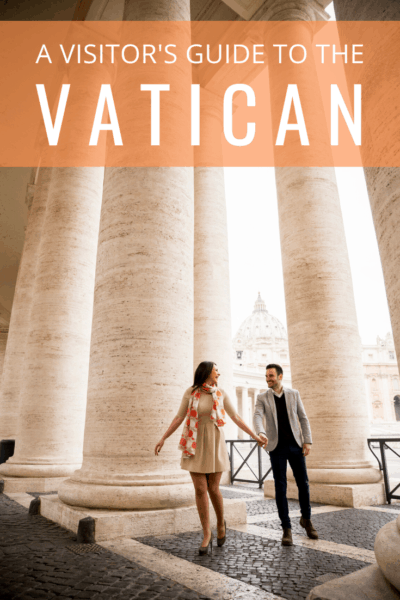
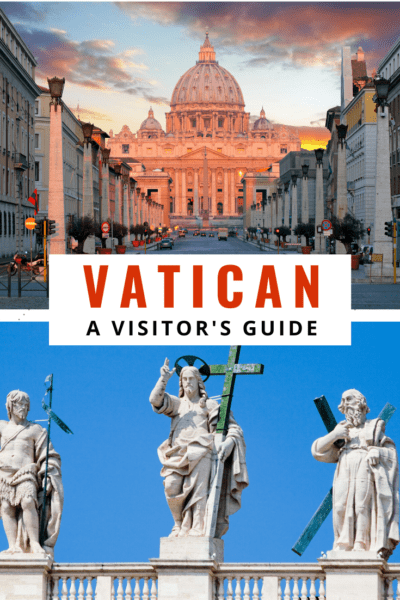
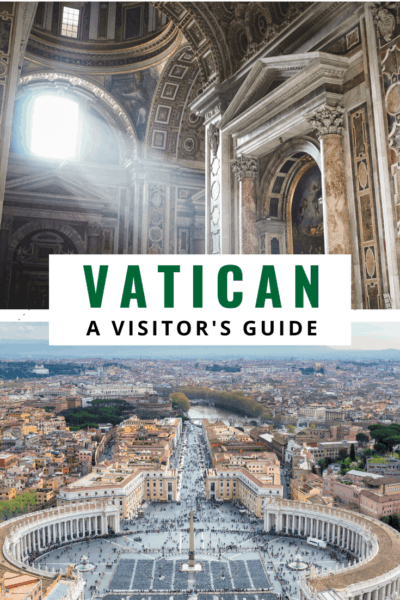
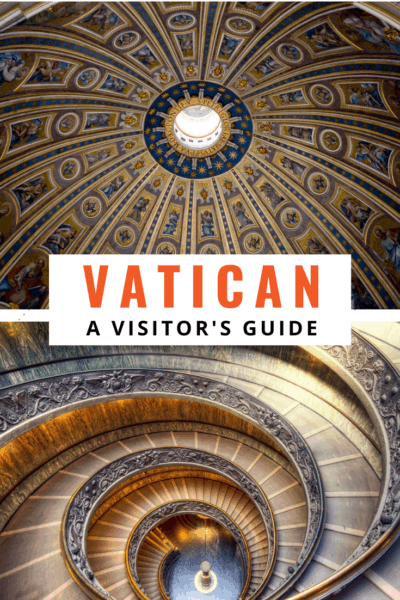
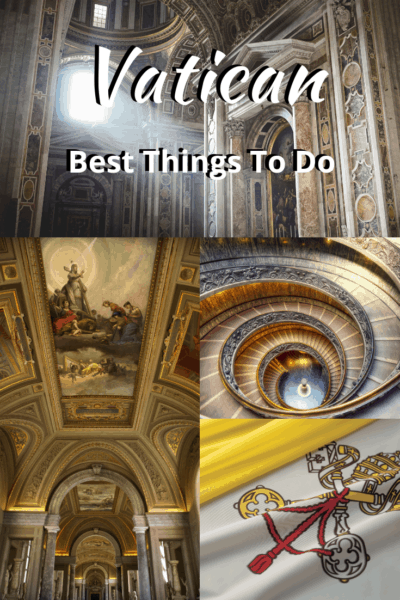
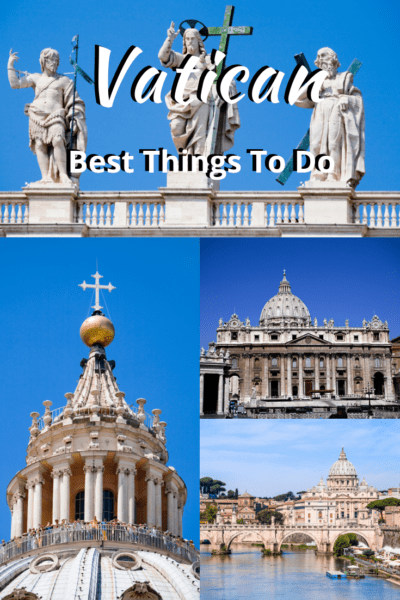
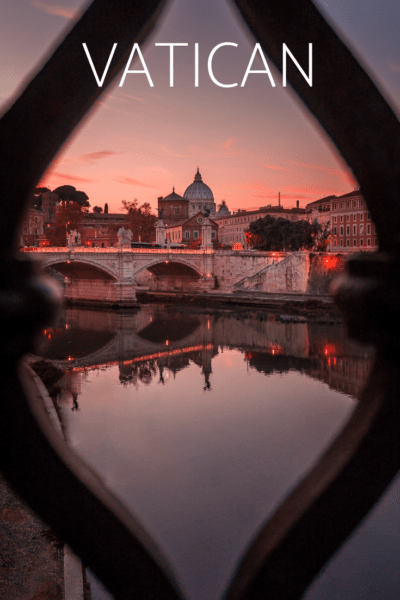
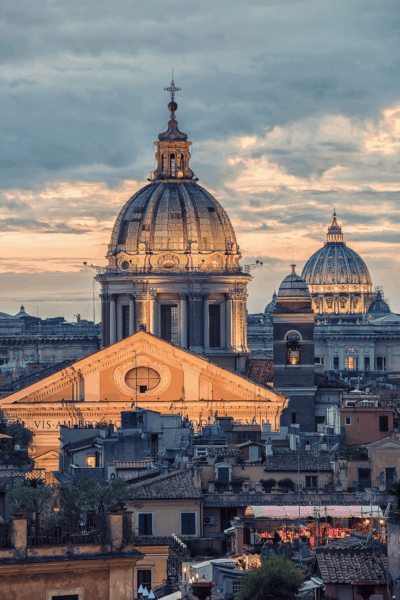
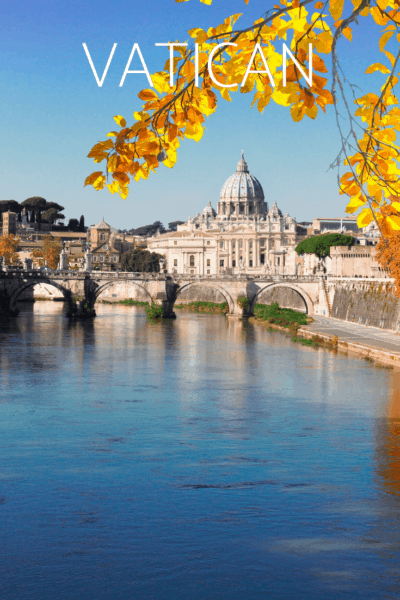
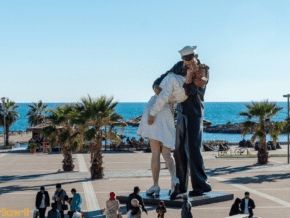
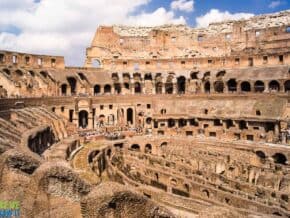
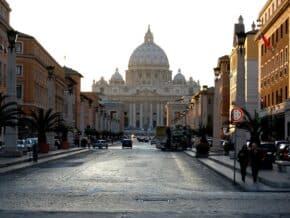
Great photos. This summer I plan a trip to Italy and want to visit the Vatican. Thank you very much, excellent blog, I wrote everything in detail, I want to get to the Vatican necropolis, thanks for the advices. Good luck!
We’re glad we could help you, Tori. Hope you have a fantastic trip. Please let us know how it goes. 🙂
Your post made me miss Rome. The first time we visited the Vatican was in 1989, when we left Romania. I remember dragging my 3-year old son through the Sistine Chapel. The poor child was bored silly and constantly asking “when can we go home, mom?” But for me those days were like a dream. Didn’t want to go anywhere, leave alone “home” hahaha!
Rome is amazing but we only spent 3 days there, and one of them was a day in Vatican City. We barely scratched the surface and I know that we missed so much. What should we be sure to see the next time?
What a great article, I was not aware of the private tour you could request. I had been there once and thought I was aware of everything but wrong!! So glad I found this! Now I’ve got to keep my fingers cross that they can get us in…
Same with us, Penny. We didn’t have enough time to fit everything into our one day itinerary. The next time we visit Rome, we plan to stay longer. And even though we’ve been to the Vatican Museums before, we do plan to book a private tour. It’s like the Smithsonian – you can never see all of it in one go!
I could say, the St Peter’s Basilica Museum and Vatican Museum are the must-dos of your trip to Rome.
Is there any way to print out your vatican city info, Civitavecchia, etc on my end I get alot of ads-would like to avoid the extra ink
We were thinking of just doing St Peters Basillica/Sq-and for going Systine-yay/nay
We have almost two days prior to a cruise out of Rome (staying in Rome 4 days after) is there enough in Civi to keep us busy/fed
Thanks
We’re thrilled that you have found our Vatican and Civitavecchia articles so useful. Thank you for letting us know!
In answer to your question, we don’t have an easy way to print articles at the moment, but that feature is on my “wish list.” All I did was found is to copy and paste the article into Microsoft Word, delete anything that uses extra ink, and add the subtitles back in (heading 1, 2, etc).
About Rome. The only way to access the Sistine Chapel is by purchasing the Vatican Museum entry ticket. Here’s what you need to consider if that’s all you want to see. Ultimately, you really won’t spend much time there. With so many images, I found it was a bit overwhelming because it was hard to focus (where to look first?), and especially with nowhere to sit, and some views were blocked because of the crowds.
Well, that’s the bad side. The good side was that I enjoyed what I did see. To be honest, I found the rest of the museum even more interesting. This, coming from a person who is not very art savvy. Considering that those museums house a whole lot of famous sculpture and paintings – you’ve paid for it anyway, so might as well take a look around the museums as long as you’re there. Maybe you’ll agree.
As to St. Peter’s Basilica, worth it. Just remember to go there directly from the Sistine Chapel and you can avoid the long security line. And bring a snack. Touring on an empty stomach is no fun. 🙂
We spent 2 nights in Civitavecchia and had an enjoyable time walking around the town. Our hotel offered a free map with city walking tours. It will take you past Corso Centocelle, a nice tourist shopping area with plenty of restaurants. If you want to eat local (we prefer to avoid tourist areas when we travel), try Piazza Fratti (Abbazia Umbra was our favorite). Or if exploring a 2000-year-old city isn’t your thing, perhaps a visit to Ficoncella Thermal Baths or Etruscan Tuscania might be more appealing. Anyway, I doubt you’ll be bored.
I hope this helps.
Linda
We love the Vatican! These are all great tips and glad to say we checked it all off but we had a couple of days there. Like you, the highlight other than attending the papal audience was the scavi tour. It was an incredible experience. We saw the pope during the two hour audience but it was indoors since it was late November. It was amazing and we felt like we were at a rock concert. Pilgrims broke out into songs and spontaneous cheers. We highly recommend it.
Tell you what, I definitely see the similarity with rock concerts. This pope is becoming quite popular, even among non-Catholics!
A very daring plan to squeeze Rome, Florence, and Venice into one week. We had a week for each one of these cities and still left disappointed for not being able to see all we wanted. But sometimes you have to be happy with whatever you can get your hand on and if a week it’s all you get… what can you do? Your post is an excellent guide for this great city. I think no matter how many times you go to Vatican, you can’t help feeling exalted by its beauty and grandeur.
I like to think of the Rome-Florence-Venice trio as Italy 101. It came at the tail end of a 6-week trip through western Europe and was ambitious, to say the least.
Thanks for the compliment. I suspect there’s a lot more to this little city-state that I missed. I’m hoping we’ll get a few tips from our readers here in the comments that will give us an excuse to return.
Hi Linda, those are wonderful tips on Vatican. Like you, I’d go back to the Vatican Museum in a heartbeat. I didn’t about the Hidden Vatican Museum tour! Will definitely keep that in mind. It’s interesting to learn the history of “no photo” rule. I thought they just wanted to protect the artworks from flash exposures. Nice finding your blog.
Mi, Marisoil, did you make it to the scavi/necropolis?
Thanks goodness I checked this one off when I was much younger. Did you know the Vatican has its own currency?
True, that. The Vatican had its own currency until it was abolished in favor of the Euro. Now the Vatican mints its own Euro coins – which are hard to find because collectors grab them up as soon as they are minted.
Well, I hadn’t thought to put Vatican City on our must see list next to Rome but, after this post, I definitely will. Rome has such an amazing history, wealth of art and so many other places to see we’ll have to plan on several days there to do it justice. And wow, am I looking forward to it!
Totally agree with you, Anita. We were there for four days and feel like we barely touched the surface of what Rome has to offer. Though I’m glad we went to the Vatican. It was a fabulous day.
I love the first panoramic view of Vatican Square. We went there ages ago and my memory of it is quite rusty, so your photos came in handy.
We’re glad you like it. Most of these photos were formatted for Pinterest but it was too pretty to bypass.
Oh, let me add one to your list! visiting the Necropolis is a must do for any history lover! The pre-Christian burial grounds are incredible, and the art on the walls there look new and fresh. The City of the Dead is a private tour, contact the Vatican for permission and tickets!
I’m glad you agree with us! Actually, the necropolis was on our list – it’s #4. They call it the Scavi (that’s Italian for excavations). I guess those are the only excavations in the country, lol.
And yes, indeed, it is a private and exclusive tour that requires prior arrangements.
Well, your post makes me want to do it all over again!
I always knew that the Catholic church was very thorough at rising/making money, but I would have never expected such high admission fees combined with such drastic “no photo” rules. Still, I guess the devoted are exited to visit the place. [Disclaimer: this comment in by somebody who has travelled much of the world and has always by-passed Rome.]
Sorry to hear you’ve bypassed Rome, Juergen. Between the ruins and the art it is a fabulous destination. The Roman Empire has its roots there and it’s everywhere you look, which is kind of cool. Besides, the food in Lazio is unique.
As for the price, the Vatican Museums cost roughly the same as the Louvre.
We only had 2 days in Rome as well, and decided to skip Vatican City due to time constraints (and all the food I had to fit in). It’s hard to see all of Rome in a few days! I didn’t think I’d like the city, but turns out I loved it! Italy is still one of my favorite countries.
We certainly can’t blame you for wanting to fit in as much food as possible! We want to explore more of the country besides just the Big Three (Rome, Florence and Venice), especially because the food differs by region. Do you have any experience with other places?
It’s been 30 years since we visited Rome (and the Vatican) so I feel like we’re overdue for a visit. Thanks for the great insider tips like the Hidden Vatican Museums.
Hi Shelley. I hope you do decide to return. The transportation system has been transformed.
I think my favorite part of the Vatican was the Sistine Chapel. I was there right after the restoration in the mid 1990s.
Hi, Nancie, you have good taste. We enjoyed the Sistine Chapel a lot but we probably need to return and spend more time examining the paintings. The last time we didn’t want to stand around very much because our feet were too tired.
I had Rome on my wish list for 2014, but didn’t quite get there. So it’s on the list for 2015 — wish me luck! I want to see and do everything you’ve mentioned. When I hear Vatican, I think “Pope”, so one of my top things would be seeing him. Thanks for the tips on that.
Best wishes on scheduling your Rome trip this year. I hope you manage to spend more than three days in the city (as we did) and get to see everything you want to.
If you’re a museum lover you might want to consider planning a second day at the Vatican. The Wednesday morning audience eats up a lot of the day.
We have been to the Vatican several times but never seen the pope, now we know how, thanks.
You’re welcome. I was surprised at how easy it is to do.
Touring the Scavi sounds cool. I will have to check that out.
Yeah, those offbeat tours are always fun.
Hey Linda I was interested in touring the vatican necropolis and was wondering how you were able to reserve your spot? I see the only viable way would be through fax via their website. Is that true? Thank you 🙂
Hi Omar, I know, right? They do seem to be a little behind the times. Who uses fax anymore? lol
To answer your question, we messaged them through their website’s contact form. I just made super-sure it had all the required information. http://www.scavi.va/content/scavi/en/contattaci.html. They confirmed by email. Hope this helps.